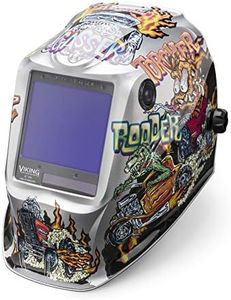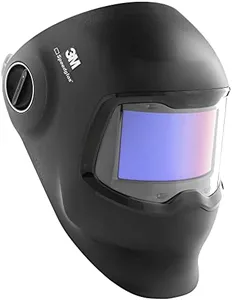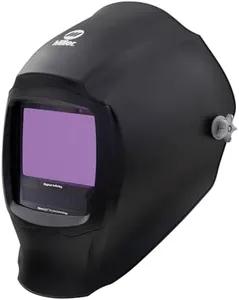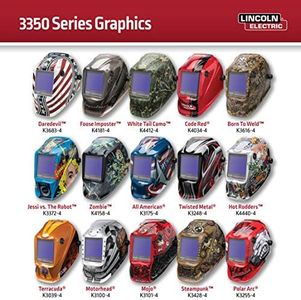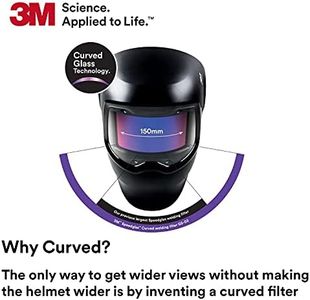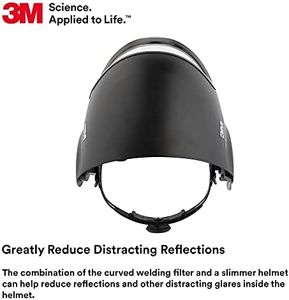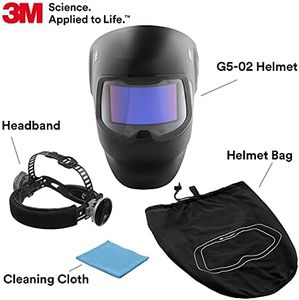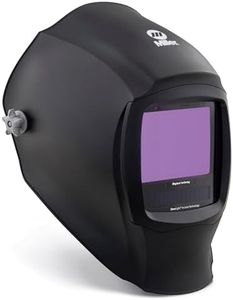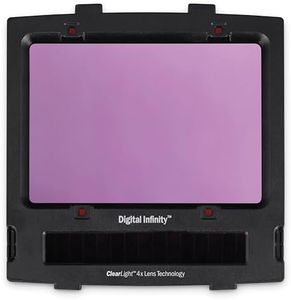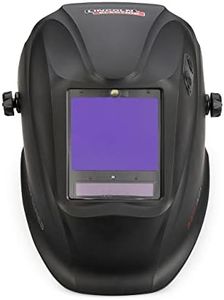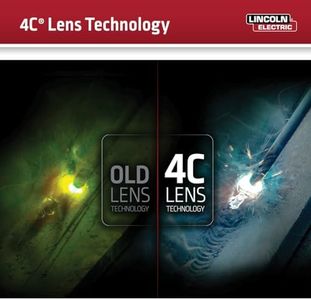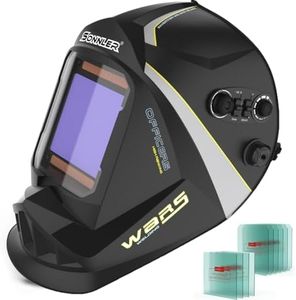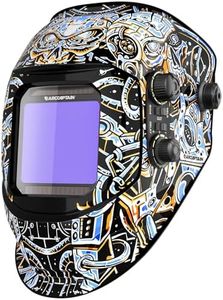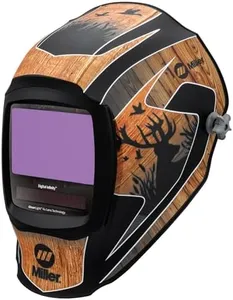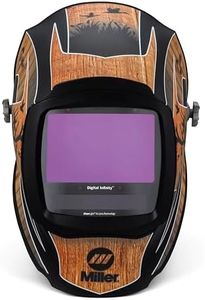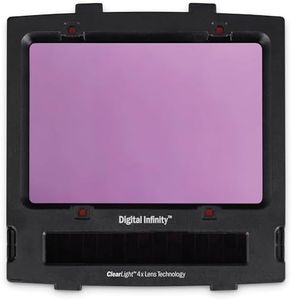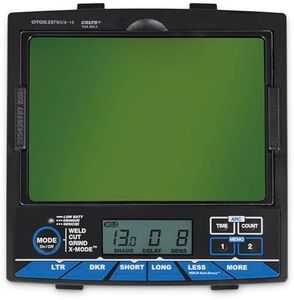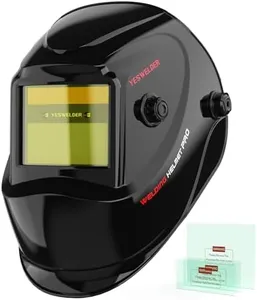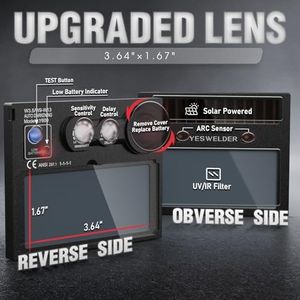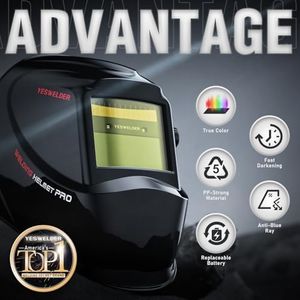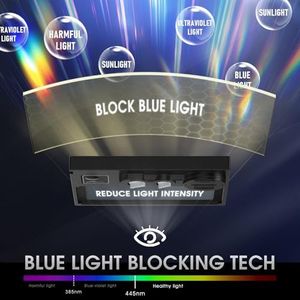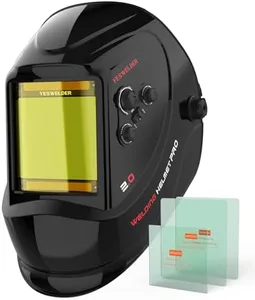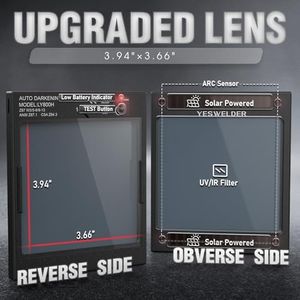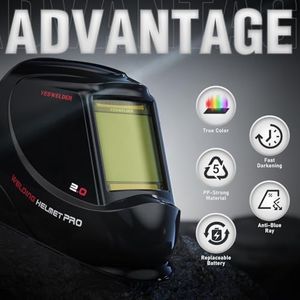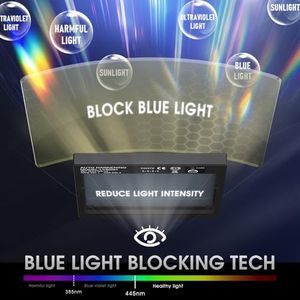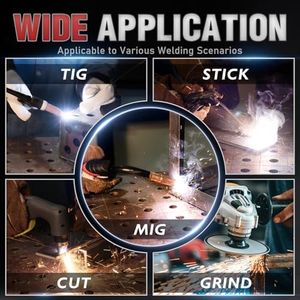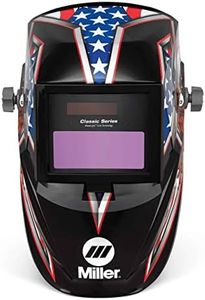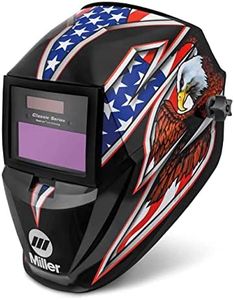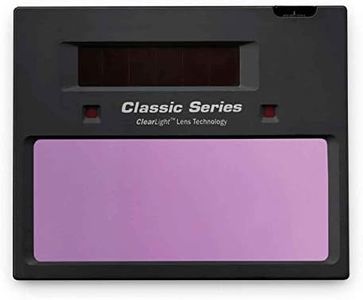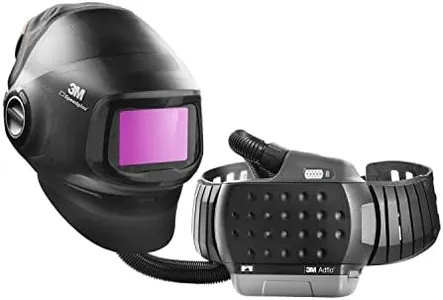10 Best Welding Helmets 2025 in the United States
Winner
Lincoln Electric VIKING 3350 Hot Rodders™ Welding Helmet
The Lincoln Electric VIKING 3350 Hot Rodders™ Welding Helmet is designed for welders who value clear vision and comfort during long sessions. It stands out with its industry-leading 4C Lens Technology, providing excellent clarity (rated 1/1/1/1) and a large 12.5 square inch viewing area. This wide view helps you see your work more easily without constantly adjusting your head. The helmet features an auto-darkening filter (ADF) that adjusts quickly to changing light, which is essential for protecting your eyes from bright sparks while allowing you to weld efficiently.
Most important from
3059 reviews
3M Speedglas Welding Helmet G5-02, Auto Darkening Welding Helmet Meets ISO 16321 TIG+ Standards, Light State 2.5, Curved Wide View ADF, Bluetooth Enabled, 4 Arc Sensors, Includes Welding Helmet Bag
The 3M Speedglas Welding Helmet G5-02 is a high-quality option for industrial welders, featuring advanced Auto-Darkening Filter (ADF) technology that meets ISO 16321 TIG+ standards. One of its standout features is the curved wide view ADF, which significantly enhances the field of view, allowing for better peripheral vision. The helmet's natural color technology ensures that colors appear brighter and more realistic, which is beneficial for precision work. Additionally, the helmet is equipped with four arc sensors, providing reliable detection and lens darkening during welding activities.
Most important from
20 reviews
Miller Digital Infinity™ Black, ClearLight 4X - Auto Darkening Welding Helmet for Men with Light State and 4 Arc Sensors - Welding Mask with 13.4 sq. in. Viewing Area - Lightweight Welding Hood
The Miller Digital Infinity welding helmet stands out with its very large 13.4 square inch viewing area, which helps reduce tunnel vision and makes it easier to see your work clearly. Its ClearLight 4X technology offers brighter and more realistic views compared to many standard helmets, making it a good choice for precision tasks. The helmet is versatile, with multiple modes for welding, cutting, grinding, and even a special X-Mode that helps when sensors might get blocked or in bright sunlight. Four arc sensors provide reliable auto-darkening, adjusting the lens quickly and accurately to protect your eyes. Controls for shade, sensitivity, and delay are digital and user-friendly, with memory settings to save your preferences.
Most important from
23 reviews
Top 10 Best Welding Helmets 2025 in the United States
Winner
Lincoln Electric VIKING 3350 Hot Rodders™ Welding Helmet
Lincoln Electric VIKING 3350 Hot Rodders™ Welding Helmet
Chosen by 1107 this week
3M Speedglas Welding Helmet G5-02, Auto Darkening Welding Helmet Meets ISO 16321 TIG+ Standards, Light State 2.5, Curved Wide View ADF, Bluetooth Enabled, 4 Arc Sensors, Includes Welding Helmet Bag
3M Speedglas Welding Helmet G5-02, Auto Darkening Welding Helmet Meets ISO 16321 TIG+ Standards, Light State 2.5, Curved Wide View ADF, Bluetooth Enabled, 4 Arc Sensors, Includes Welding Helmet Bag
Miller Digital Infinity™ Black, ClearLight 4X - Auto Darkening Welding Helmet for Men with Light State and 4 Arc Sensors - Welding Mask with 13.4 sq. in. Viewing Area - Lightweight Welding Hood
Miller Digital Infinity™ Black, ClearLight 4X - Auto Darkening Welding Helmet for Men with Light State and 4 Arc Sensors - Welding Mask with 13.4 sq. in. Viewing Area - Lightweight Welding Hood
Lincoln Electric K3034-5 Viking 3350 ADV Auto Darkening Welding Helmet with 4C Lens Technology, Black
Lincoln Electric K3034-5 Viking 3350 ADV Auto Darkening Welding Helmet with 4C Lens Technology, Black
ESAB® Sentinel™ A60 Welding Helmet, Black Low-Profile Design, High Impact Resistance Nylon, Large Viewing Area 4.65 in x 2.80 in
ESAB® Sentinel™ A60 Welding Helmet, Black Low-Profile Design, High Impact Resistance Nylon, Large Viewing Area 4.65 in x 2.80 in
Miller 296783 Digital Infinity Auto Darkening Welding Helmet with ClearLight 4x Lens, Outdoorsman
Miller 296783 Digital Infinity Auto Darkening Welding Helmet with ClearLight 4x Lens, Outdoorsman
YESWELDER Auto Darkening Welding Helmet, Blue Light Blocking, 1/1/1/1 True Color Solar Powered Welding Hood with 2 Arc Sensors, Wide Shade 3.5/9-13 Welder Mask for TIG MIG ARC and Grind
YESWELDER Auto Darkening Welding Helmet, Blue Light Blocking, 1/1/1/1 True Color Solar Powered Welding Hood with 2 Arc Sensors, Wide Shade 3.5/9-13 Welder Mask for TIG MIG ARC and Grind
YESWELDER Large View Auto Darkening Welding Helmet, Blue Light Blocking, 1/1/1/1 True Color Solar Powered Welder Hood Mask with 4 Arc Sensors, Wide Shade 3/5-9/9-13 for TIG MIG ARC CUT and GRIND
YESWELDER Large View Auto Darkening Welding Helmet, Blue Light Blocking, 1/1/1/1 True Color Solar Powered Welder Hood Mask with 4 Arc Sensors, Wide Shade 3/5-9/9-13 for TIG MIG ARC CUT and GRIND
Miller Classic Series Liberty Welding Helmet with ClearLight Lens
Miller Classic Series Liberty Welding Helmet with ClearLight Lens
3M Speedglas Heavy-Duty Welding Helmet G5-01 with G5-01VC ADF and Adflo High-Altitude PAPR Assembly, Bluetooth, Natural Color Technology, 46-1101-30iVC
3M Speedglas Heavy-Duty Welding Helmet G5-01 with G5-01VC ADF and Adflo High-Altitude PAPR Assembly, Bluetooth, Natural Color Technology, 46-1101-30iVC
Our technology thoroughly searches through the online shopping world, reviewing hundreds of sites. We then process and analyze this information, updating in real-time to bring you the latest top-rated products. This way, you always get the best and most current options available.

